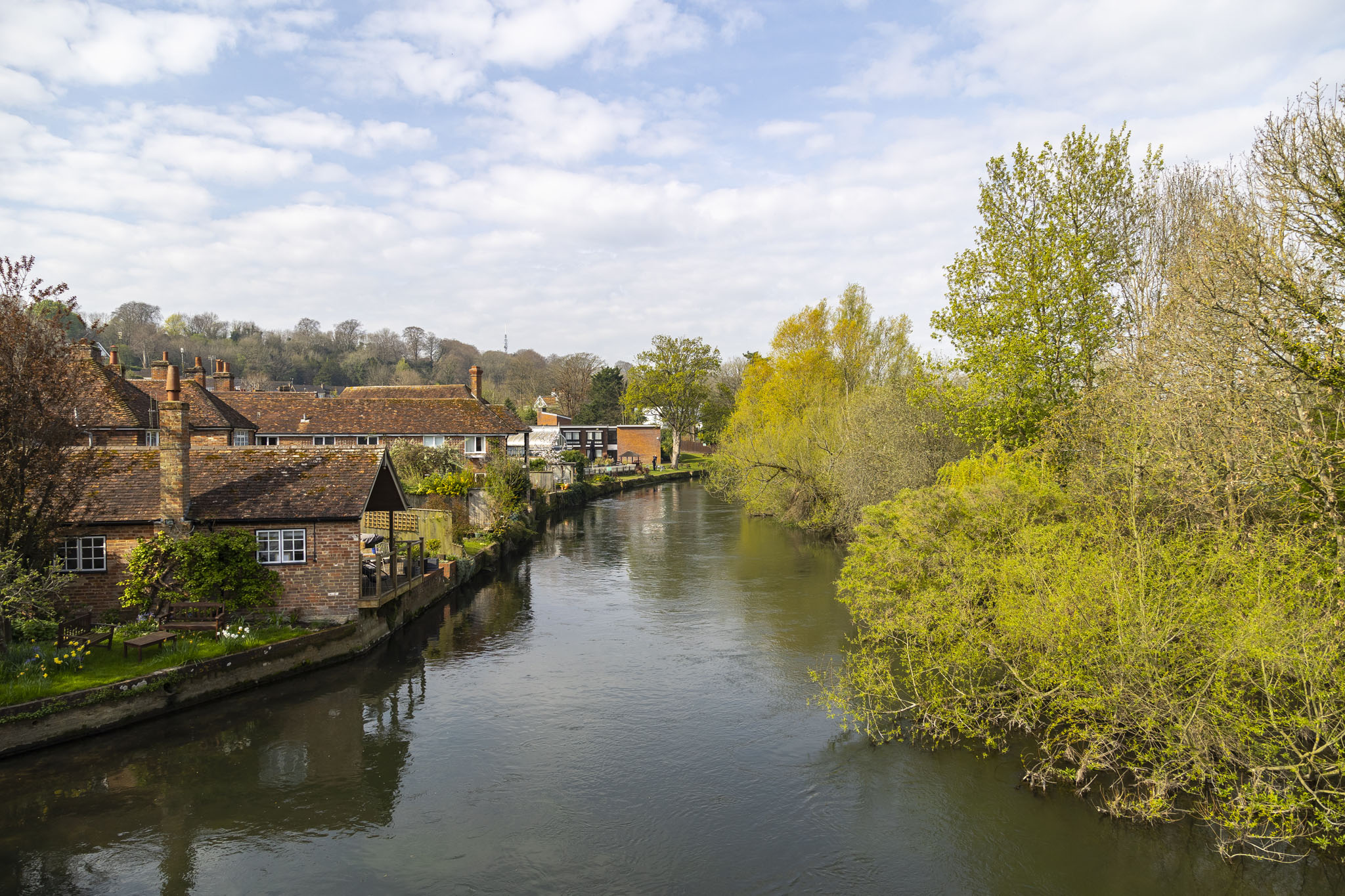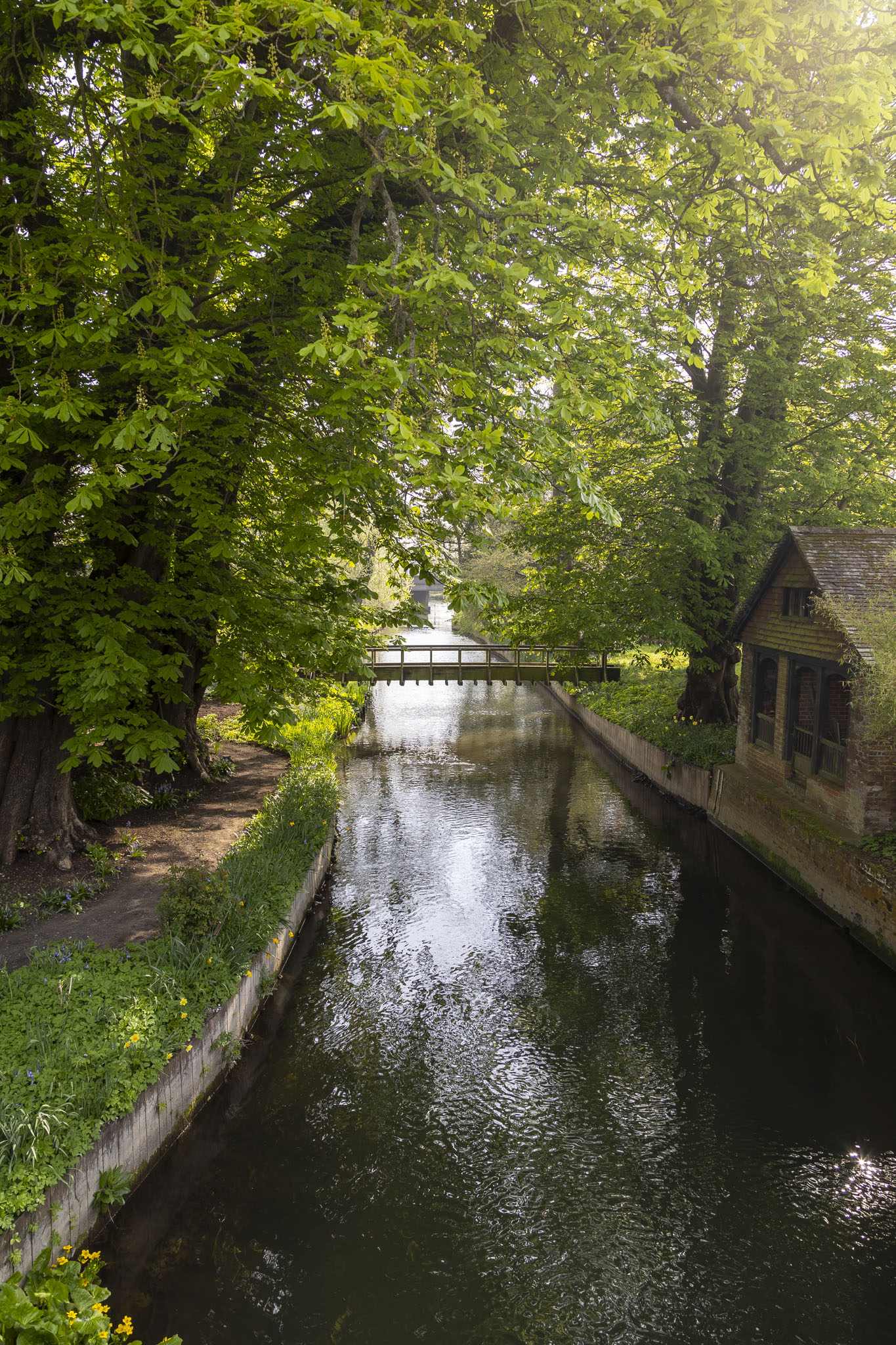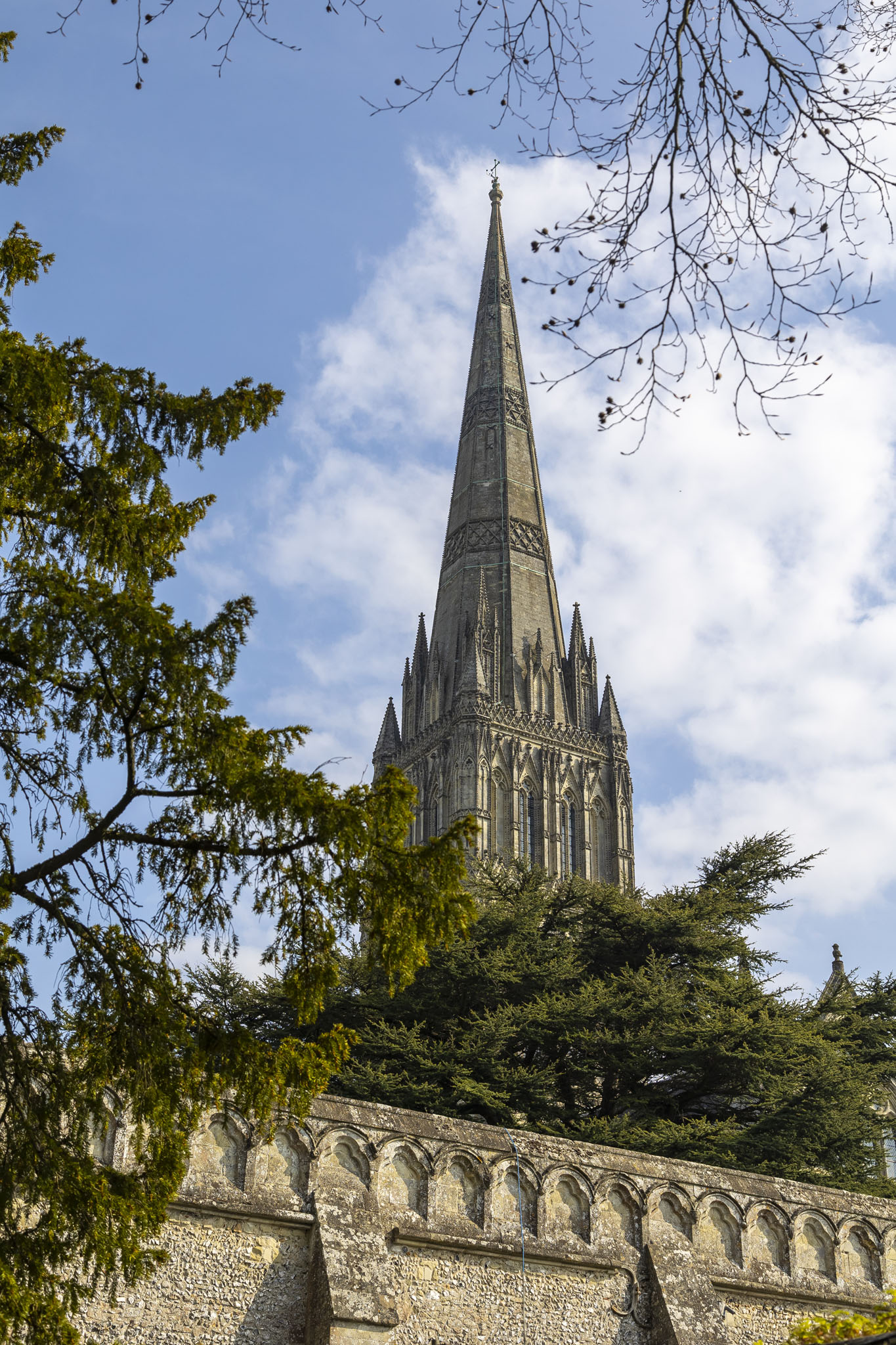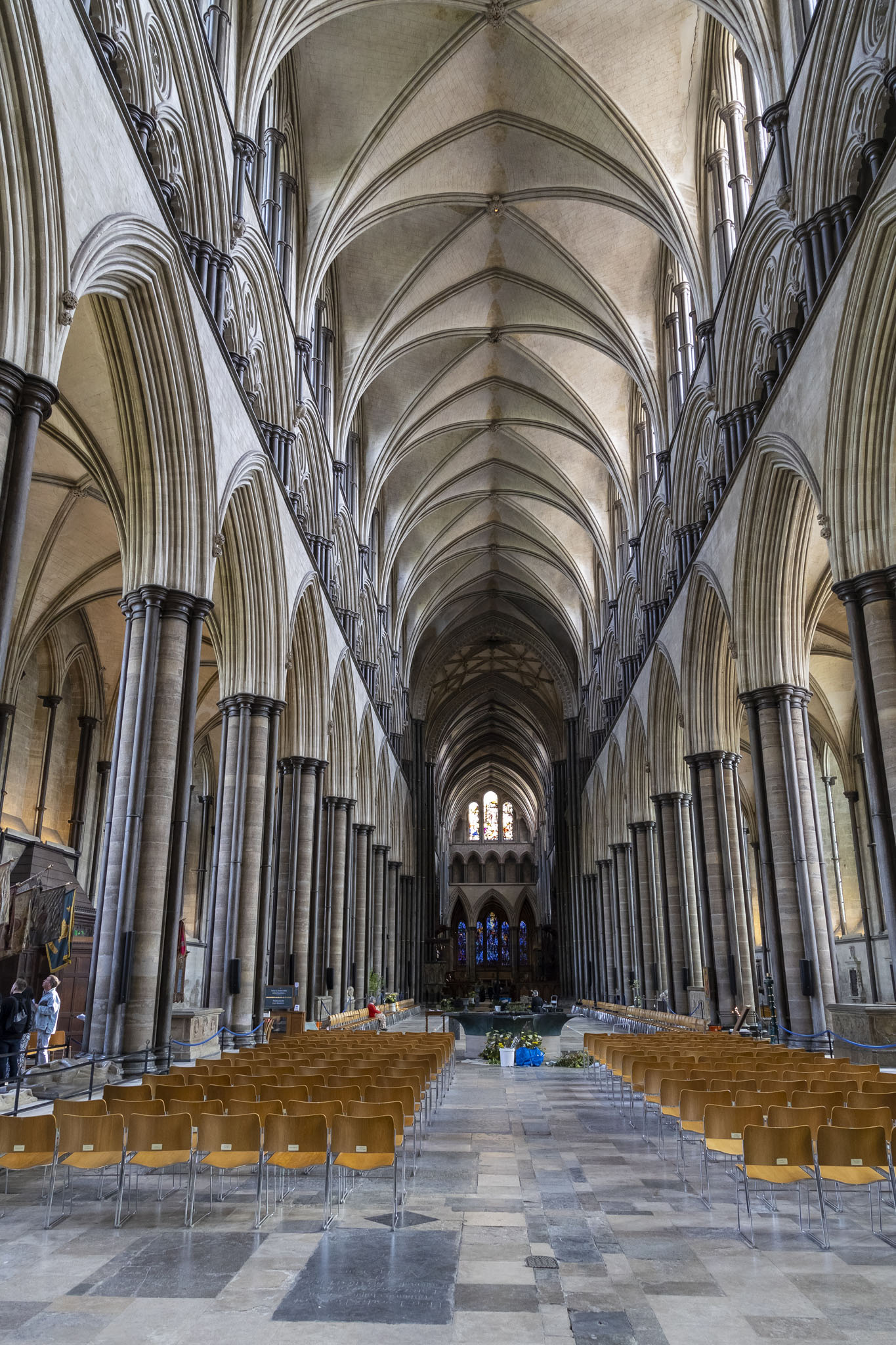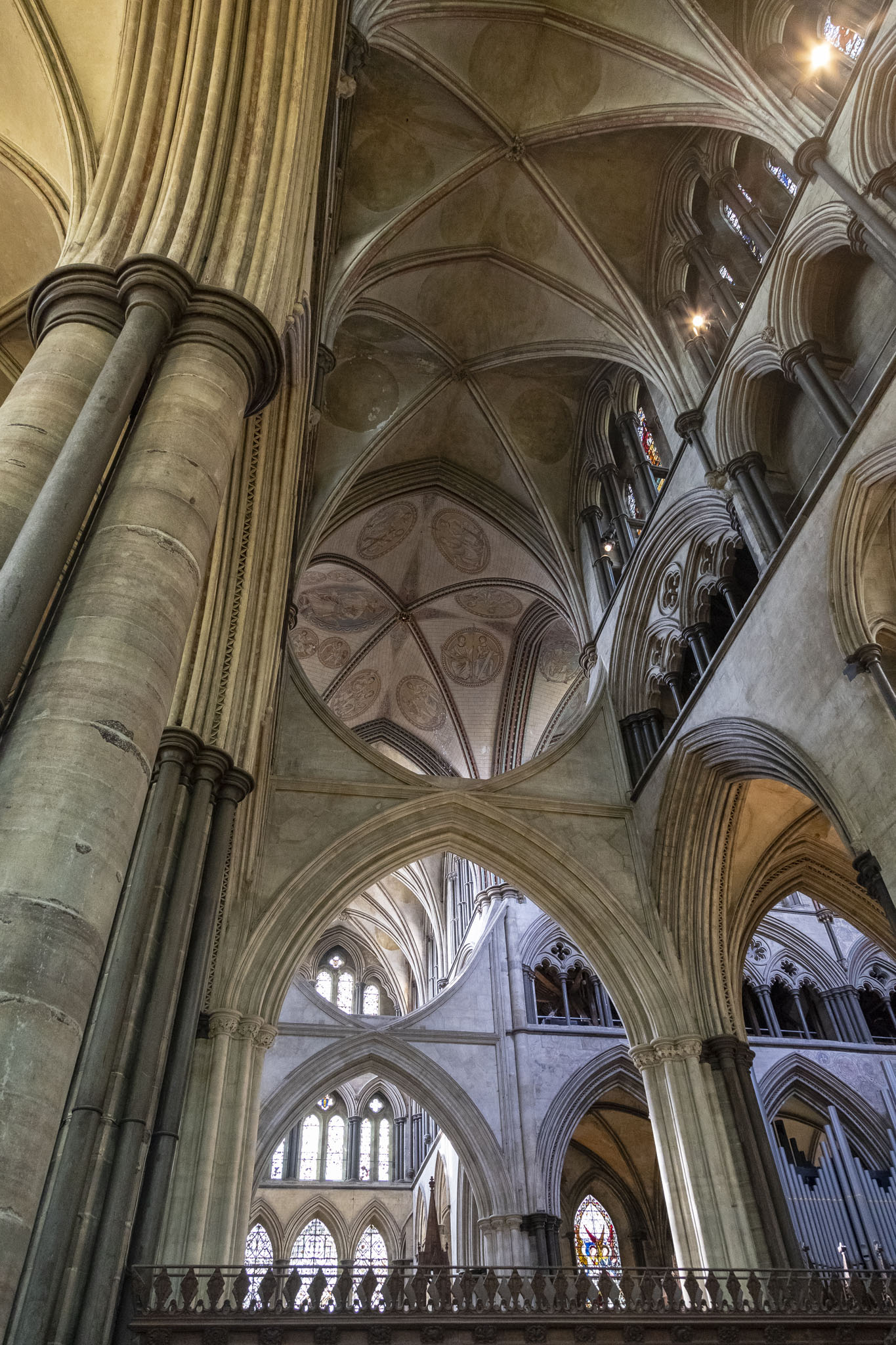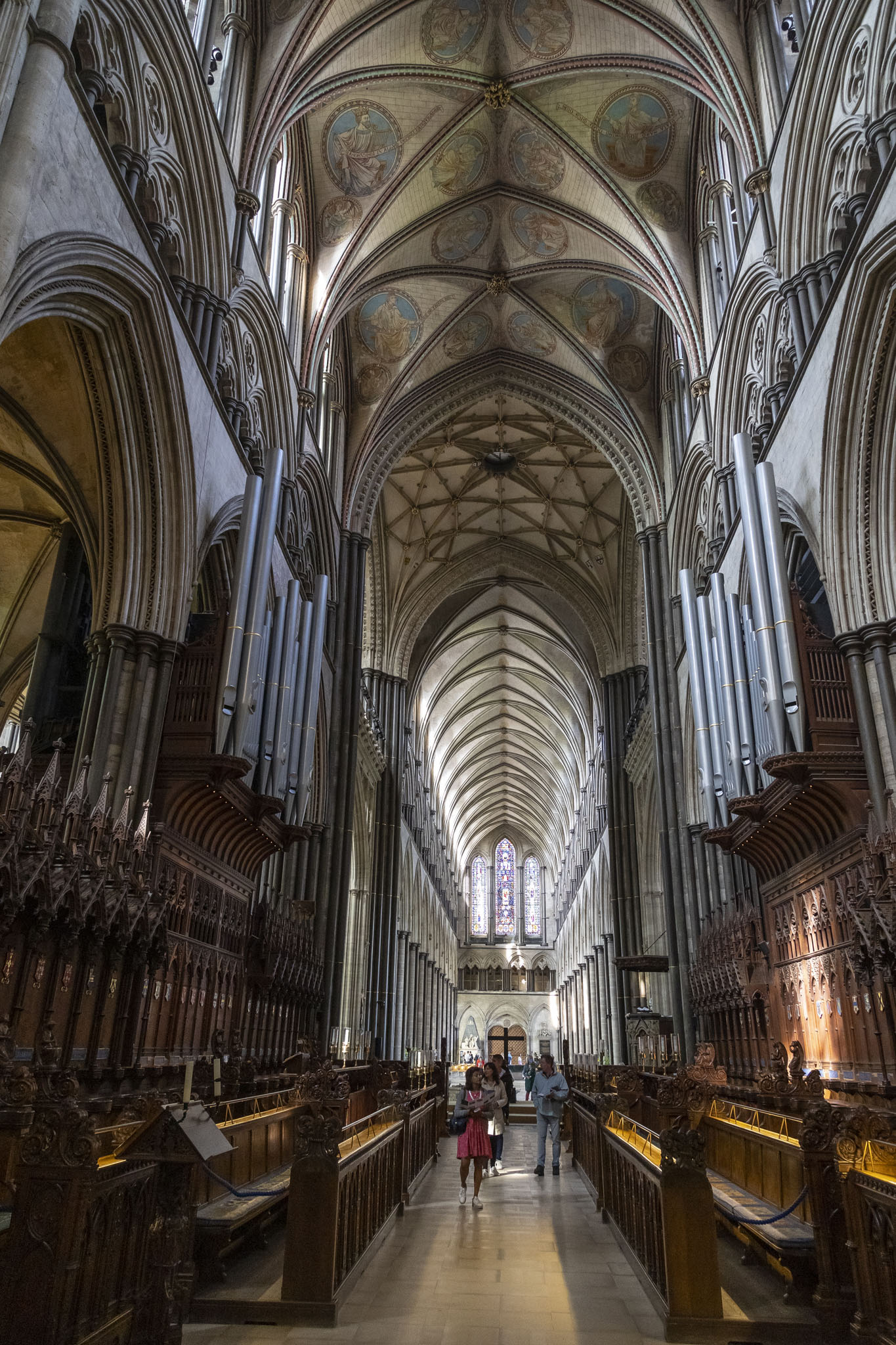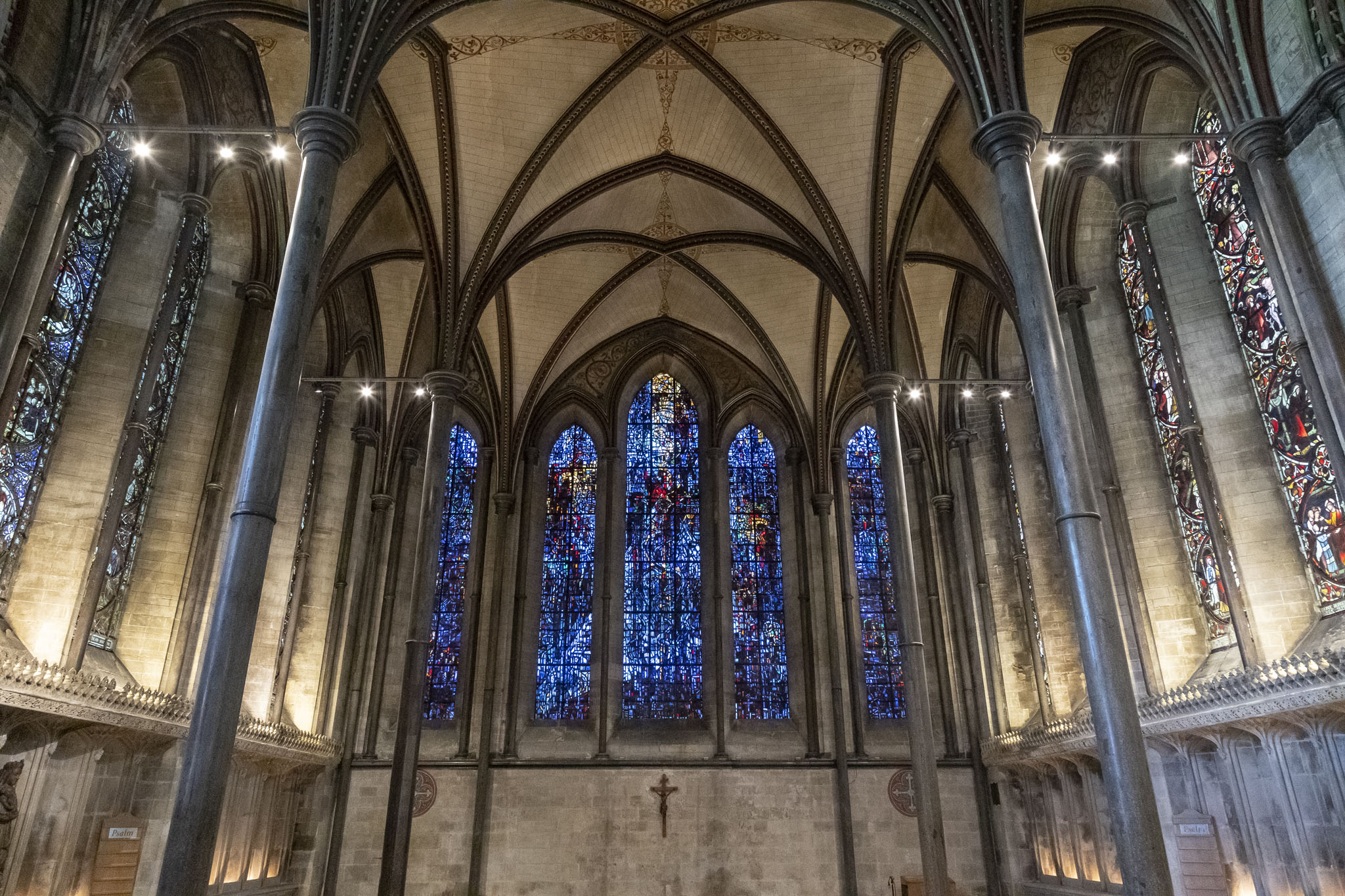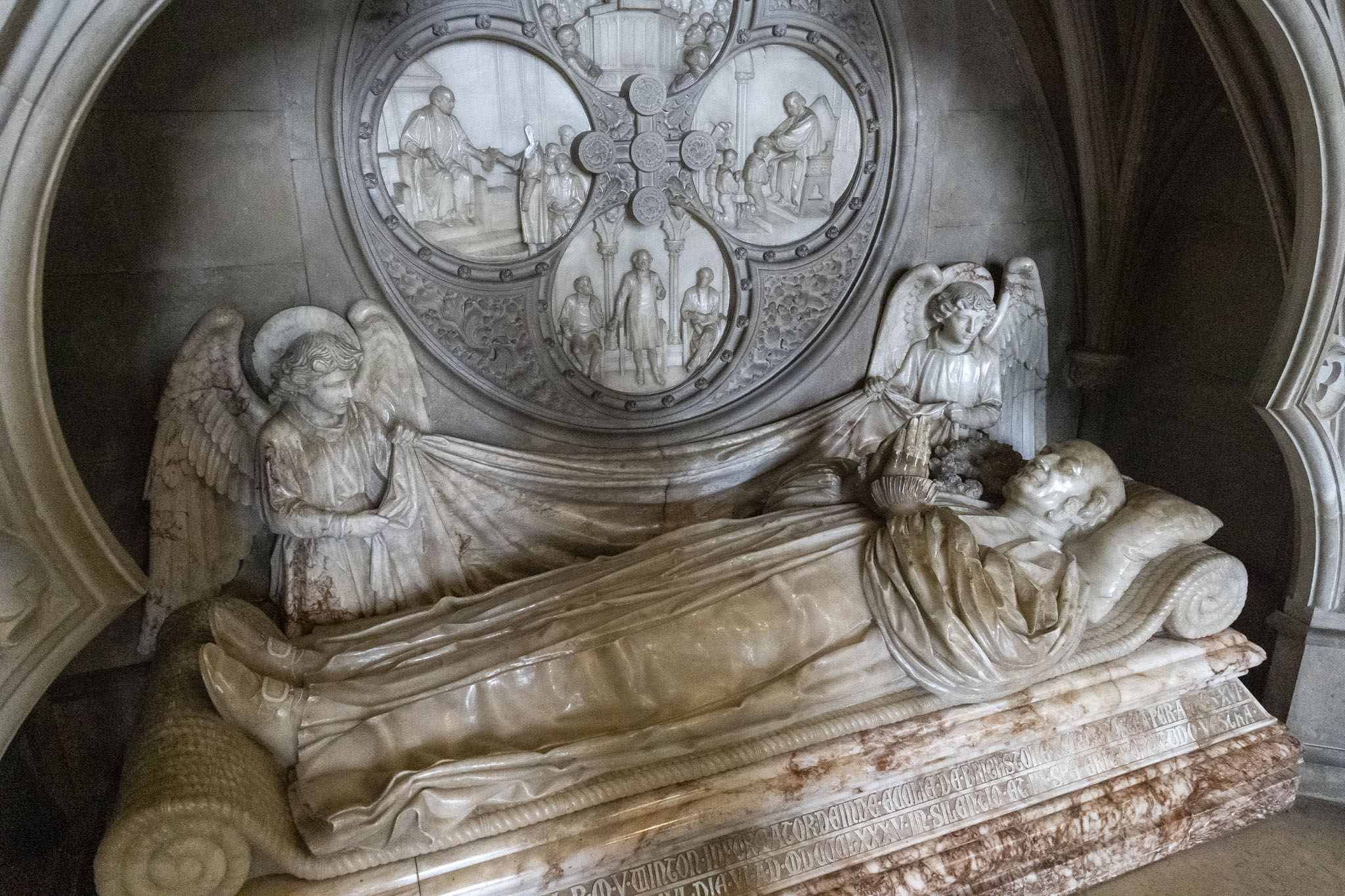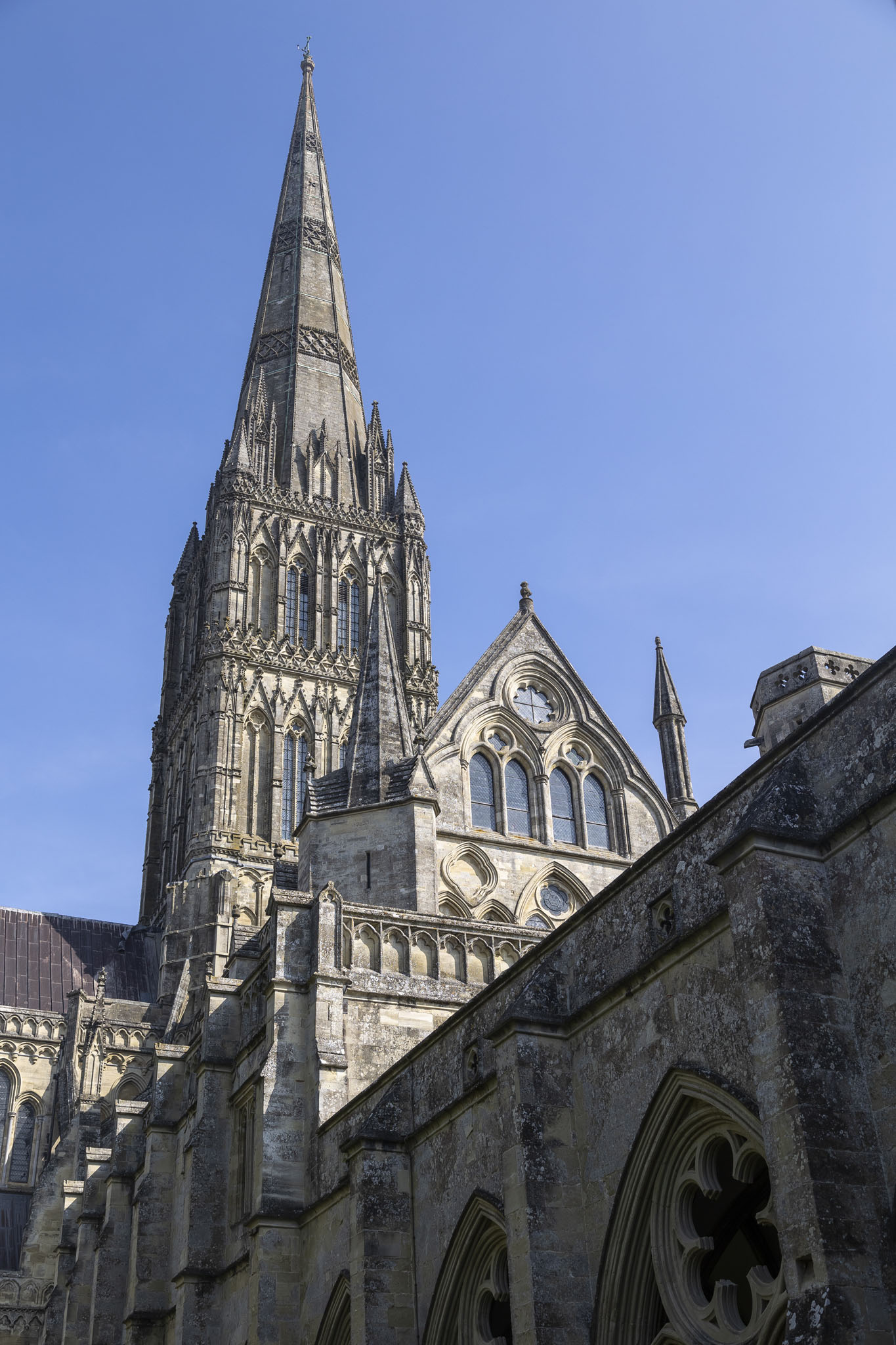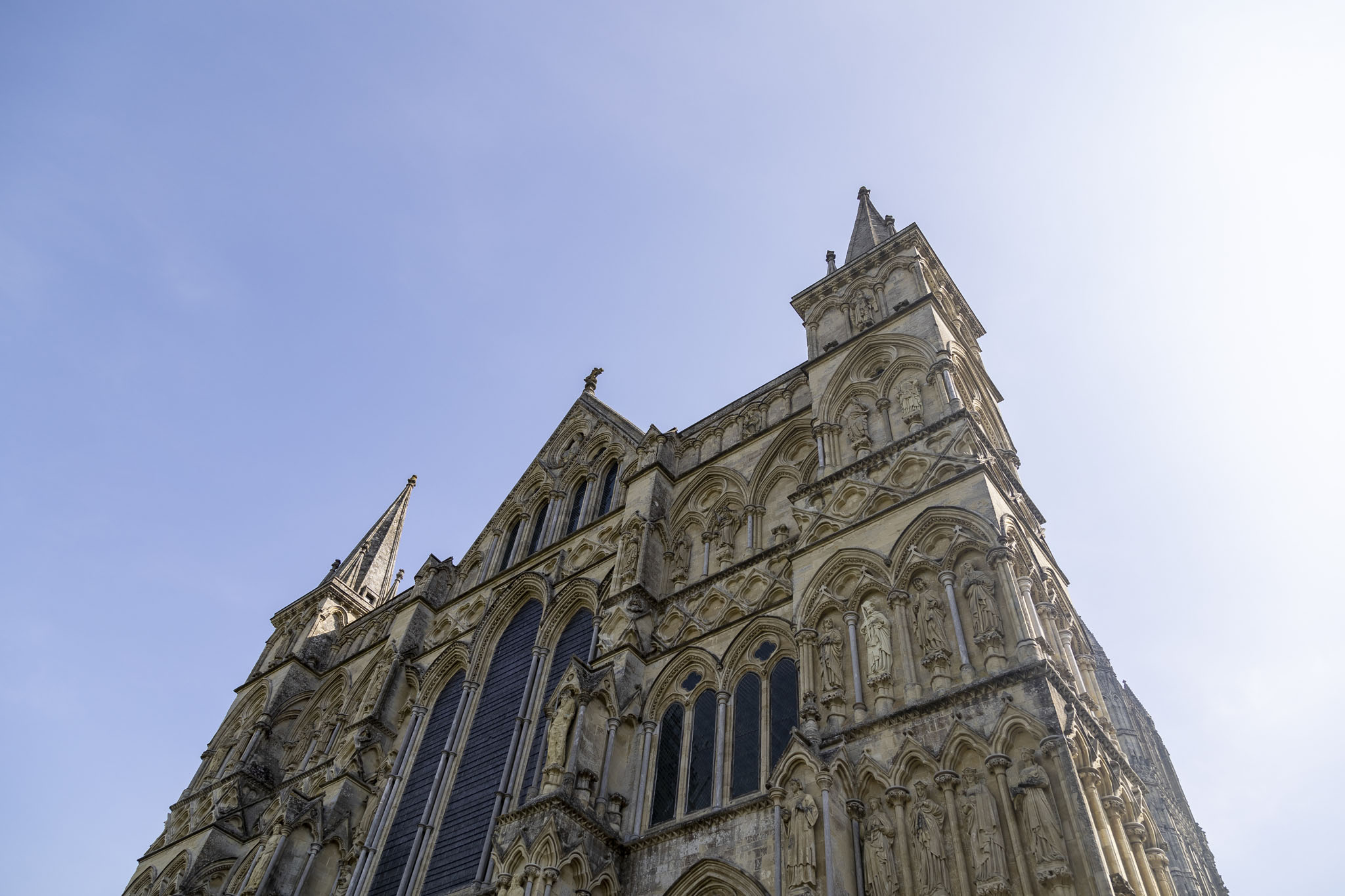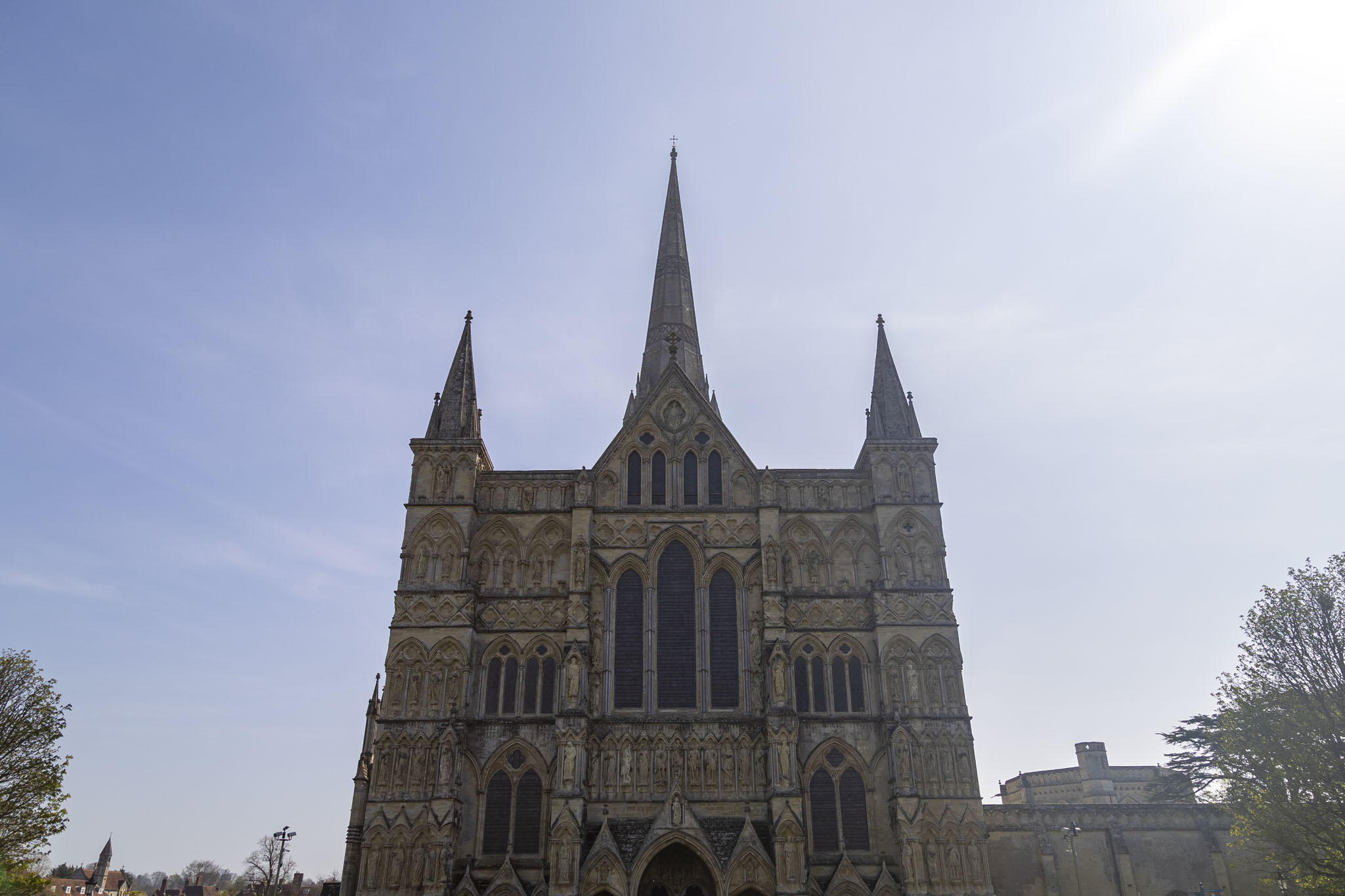We’d visited Salisbury Cathedral before, but it was quite a long time before, so during our long weekend break in Salisbury in 2022 we decided we’d have to take another look at it. Our memory of the cathedral from that earlier visit was that it had all been a bit underwhelming; nice enough, but not in any way spectacular. Would we change our minds with a repeat viewing of the thirteenth century church? We’re open-minded enough that it would be possible, but we had also done an awful lot of travelling around the world since then so the cathedral would be up against a lot of other churches we’d have seen in the interim.
We were staying at the Rose and Crown, so were only ten minutes away on foot. If you’ve read the first post in this travelogue series then you might remember that the bridge over the River Avon is called either Ayleswade or Harnham Bridge. Like the nearby cathedral, it too dates from the thirteenth century. The pointed arches of the bridge give away its architectural style as Gothic. The views along this part of the river in both directions, and of the tree-lined fields to one side and the houses and our hotel on the other, were all very pleasant.
There are four medieval gates still set in parts of the wall that would have formed this fortified area of Salisbury, and our short walk took us through probably the least visually impressive of the four, Harnham Gate. The other three are Bishop’s Gate, St Ann’s Gate, and High Street Gate. Immediately after passing through the gate, we had good views to the cathedral’s imposing spire.
Salisbury Cathedral was the city’s second cathedral. The original had been located at Old Sarum (a place we’d be visiting the next day, and which you’ll be able to read about and see pictures of in a subsequent post in this series), but disagreements between the church and the military units there led to a new building being constructed in its present location some considerable distance away. The legend states that the bishop shot an arrow from Old Sarum with its resting place being where the church would be built; the arrow hit a deer which ran until it died. As a general rule, you should always get surveyors in to check the land where you’re planning on building large stone structures and not rely upon the chance expiration spot of a wounded mammal.
Salisbury Cathedral took just 38 years to complete, and at 123 metres in height, following the collapse of the spire of St Paul’s Cathedral, London in 1561 (the one destroyed and rebuilt a century later in the Great Fire), it became the tallest church spire in the United Kingdom. The architect of the new St Paul’s, Sir Christopher Wren, was contracted in 1668 to design some reinforcing beams under the spire to prevent Sailsbury suffering a similar spire collapse, however.
The cathedral has a very tall and narrow nave, and makes good use of contrast between the dark, polished marble of the supporting columns with the lighter stone above and used for the main walls. It’s all very nice, but, as with our previous visit, there was something a bit average about it all. We’ve been to spectacularly ornate cathedrals that felt majestic and overpowering, and we’ve been to cathedrals with very austere interiors too that had their own power to impose obedience and fear on the faithful, and Salisbury Cathedral, for some reason we can’t put into words, just doesn’t have any of that. It’s still nice, and there are still things to be impressed by there, but it lacks a little something. Again, all just our opinion. Don’t let that dictate whether you should go or not. You might visit and squeal with delight, dancing between the chairs and along the transepts, pointing at sculptures and tombs and flags with utter joy. It’s usually frowned upon in religious buildings, but don’t you ever be anything else than you.
One thing we did like in Salisbury Cathedral was the modern font. We’d seen the prototype of this font when we’d visited the cathedral in 2007 (so you can visit that page linked earlier in this article to compare if you’d like), and the one now there was the new form installed the following year. Difficult to get any good shots of the font and reflections thanks to the number of visitors at the time, but a lovely piece of water sculpture.
The main reason for our repeat visit to Salisbury Cathedral was not to see whether we’d changed our minds about how we felt about it – clearly, we hadn’t – but to take a look at the copy of the Magna Carta stored there; something we’d either overlooked or weren’t permitted to do for some reason before.
Heading out from the cathedral, we passed the attractive cloisters and entered the Chapter House. This small building, octagonal in shape, with a narrow, ornate central column, was decorated in the nineteenth century with scenes from the Bible. We perused a few whilst waiting our turn to enter the dark, covered section in which we could view the 1215 document. No photos, naturally. It’s smaller than we’d guessed it would be, but an impressive bit of history to feast the eyes upon.
That concluded our reasonably brief look around Salisbury Cathedral. If you’re in Salisbury then it’s definitely worth a visit, but all we’d say is that it doesn’t rate very highly in the big list of churches we’ve looked inside when we’ve travelled. There was a small fee to enter (check the cathedral website before you visit), which does include seeing the Magna Carta and is valid for a whole year. The entry price for Salisbury Cathedral is definitely worth it in our opinion.
We would be following this up with some visits to a few museums in Salisbury more-or-less directly opposite the church, and the main one, covered in the next post in this series, would be the very impressive former home of Sir Edward Heath, Arundells.
